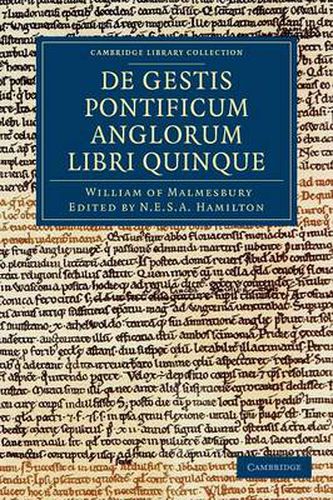Readings Newsletter
Become a Readings Member to make your shopping experience even easier.
Sign in or sign up for free!
You’re not far away from qualifying for FREE standard shipping within Australia
You’ve qualified for FREE standard shipping within Australia
The cart is loading…






William of Malmesbury (c.1090-c.1142) was a prolific historian and a trustworthy chronicler, described by Professor R. M. Thomson as ‘the most learned European of his day’ and ‘England’s greatest national and local historian since Bede’. A Benedictine monk, he spent his adult life at Malmesbury Abbey, where he assisted the Abbot in founding the library, and devoted his time to writing. The Latin text presented here, originally published in 1870 as part of the Rolls Series, is based on the manuscript at Magdalen College, Oxford. It is described with confidence by N. E. S. A. Hamilton as ‘no other than Malmesbury’s own autograph’ - a claim which the editor backs up in his comprehensive preface. Revised and added to over a period of ten years following its completion in around 1125, this early ecclesiastical history of England is as much a historical record as a primary source in its own right.
$9.00 standard shipping within Australia
FREE standard shipping within Australia for orders over $100.00
Express & International shipping calculated at checkout
William of Malmesbury (c.1090-c.1142) was a prolific historian and a trustworthy chronicler, described by Professor R. M. Thomson as ‘the most learned European of his day’ and ‘England’s greatest national and local historian since Bede’. A Benedictine monk, he spent his adult life at Malmesbury Abbey, where he assisted the Abbot in founding the library, and devoted his time to writing. The Latin text presented here, originally published in 1870 as part of the Rolls Series, is based on the manuscript at Magdalen College, Oxford. It is described with confidence by N. E. S. A. Hamilton as ‘no other than Malmesbury’s own autograph’ - a claim which the editor backs up in his comprehensive preface. Revised and added to over a period of ten years following its completion in around 1125, this early ecclesiastical history of England is as much a historical record as a primary source in its own right.